- Administrator
- Albums and Singles
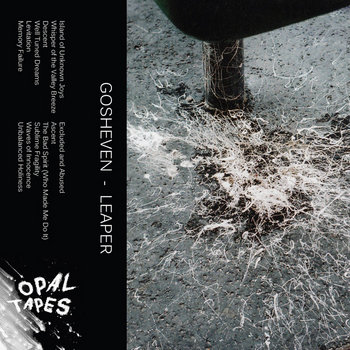
Gosheven is the solo project of Budapest’s Balint Szabo, a musician who has developed his guitar's voice against its typical confinement. Where the fundamentally out-of-tune Western tuning has withheld some musicians in its history, Gosheven has researched and concerned himself with just intonation and other non-typical tuning systems for this debut release on Opal Tapes. Balancing blunted poetics and an intimate self-analysis of his place in sexual society, guitar, voice and elegant processing tell a story of metamorphosis and realisation of what is important in our short lives.
Featured tunings: just intonations by Wendy Carlos (#2, #10) and Ben Johnston (#11); La Monte Young's The Well-Tuned Piano tuning (#1, #4); Japanese koto tuning (#7); Banda Linda horns tuning (#9); Pythagorean tuning (#6), Meantone temperament (#12), Just intonation (#3, #5, #8)
More information can be found here.
Read More
- Administrator
- Albums and Singles
Horse Follows Darkness is the second record by Delia Gonzalez, her follow up to the album “In Remembrance”.
The title is taken from a werewolf genre film her 8 year old son Wolfgang had created. At this time, Wolfgang also turned Delia onto a genre of cinema she had always resisted - the American Western.
Delia explains that what she observed “was all relevant - the album is based on our personal experience of moving back to America (from Berlin) and the journey that followed. The record is a manifestation of that, and what one creates for themselves under the given circumstances. Coming back to America, I felt like a foreigner and NYC / America felt like the Wild West. Most Westerns from the 1960s to the present have revisionist themes. Many were made by emerging major filmmakers who saw the Western as an opportunity to expand their criticism of American society and values into
a new genre.” 
The narrative of the record is one of re-encountering the frontier mentality that shaped the country but somehow never faded. This time as a foreigner. The genre of the Western remains pertinent, many of the same stories of that brutally deromanticised era are still relevant today. America hasn’t changed - the cast, times and settings have, but we still hold onto the same ideal.
Horse Follows Darkness is essentially a modern electronic soundtrack for the Revisionist Western. Even the idea for the record cover is inspired by one of the most well known modern Westerns, Robert Altman’s McCabe & Mrs Miller.
The album was recorded with Abe Seiferth at Transmitter Park studios, which Delia likens to “going to the finest tailor”. Abe became an integral part of the recording, playing guitar and helping to suggest experimenting with different synthesizers, something Delia was keen to do. Delia refers to Abe as a magical and incredibly intuitive collaborator” regarding the sound of the record.
The music that emerged from these recording sessions combines a range of influences - from the compositions of Erik Satie to ‘Salon De Musique’, the solo piano record by Su Tissue (of the L.A. punk band Suburban Lawns). The record also took on a much different shape and sound with the introduction of the Sequential Circuits Prophet VS, as well as a vintage Korg Poly synth and the Roland SH-101. The golden era Krautrock recordings of bands like Neu!, Cluster & Harmonia were touchstones as well, the repetition, swirling soundscapes and locked-in rhythm tracks.
Delia Gonzalez is a Cuban-American musician and artist, based in both New York City & Berlin. Her disciplines include everything from composer to filmmaker, dancer / choreographer, sculptor, painter & performance artist. Her musical career with DFA Records began in 2004 when the label released the 12” single “Relevee”, followed by the album of cosmic acid-house “The Days of Mars”, with Delia and then musical partner Gavin Russom.
In 2015, DFA released Delia’s first solo album entitled “In Remembrance”, which was a full piano score for a 30 minute filmed ballet, a perfect example of the type of work Delia creates as a multi-disciplinary artist.
Read More
- Administrator
- Albums and Singles

Major new work from Kara-Lis Coverdale, her solo debut vinyl release following Aftertouches (2015). A blissfully introspective 22 minute piece for keys, samplers and EQs in three parts.
A sublime and quietly hypnotic work belied by steadfast conceptual rigour, Grafts is the most ambitious and involving work yet from Kara-Lis Coverdale, her first since 2015.
In three parts of cascading yet plaintive multi-instrumental gestures, Grafts expands on the processing and self-temperment techniques explored on 2014's A 480 into a more encompassing palette. Uncompromisingly distinct while redolent of modal minimalism, '70s, new age, and folk music, Grafts effectively blurs distinctions between traditional composition and more open, overlapping genres that hover in the half-light between acoustic and electronic refinement.
Rather than anything grandiose or explicitly seductive, the effect of Grafts is best compared with the subtle intoxication of micro-dosing on LSD or the clarity afforded by quiet meditation, in a sense dilating the listener’s focus to a heightened awareness of the piece’s intricate peripheral tones as much as its melodic centerground, with a beautifully understated, surreal resolution. The piece flickers with gentle optimism, never at random, illuminating unseen spaces that quickly gradient into nothingness.
In both concept and execution, Grafts firmly resonates with Kara-Lis Coverdale's deeply established roots as an improvisational virtuoso and accomplished pianist as much as her academically informed approach to electroacoustic composition that showcases a distinct omnivorous appetite for the digital. But it's an emotional generosity that proves to be its defining, most intangible characteristic. Never fully coming to a resolution. Lingering on like a slowly dispersing plume of smoke.
More information can be found here.
Read More
- Administrator
- Albums and Singles
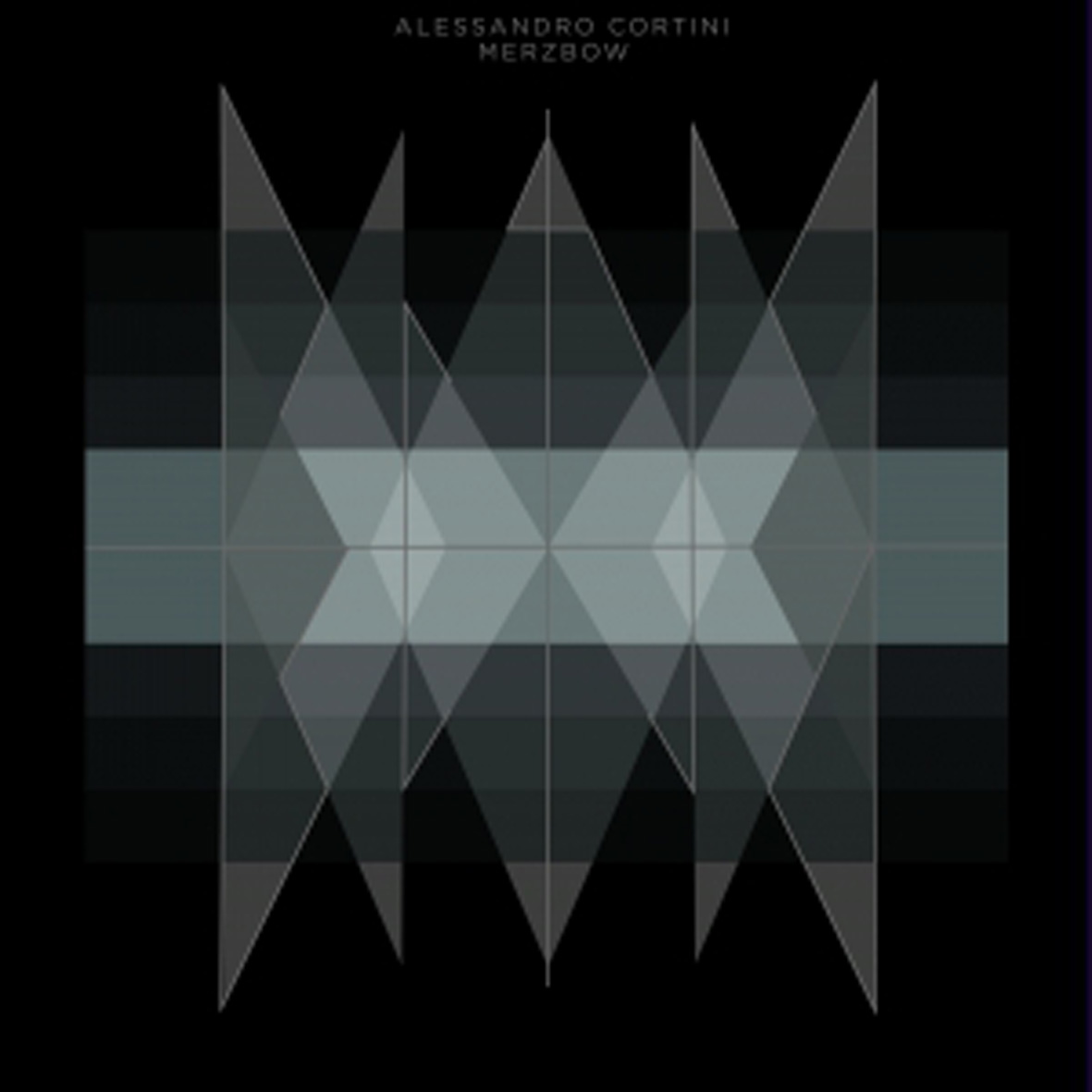 In classic Important Records fashion, this intriguing collaboration came together as a celebration of a specific vintage analog synthesizer (in this case, the EMS Synthi).  The Synthi is apparently quite well-known for its ability to generate striking analog "sci-fi sounds," which goes a long way towards explaining why Alessandro Cortini does not particularly sound at all like Alessandro Cortini here.  The singularly reliable Masami Akita, however, always unavoidably manages to sound exactly like Merzbow.  As such, this collaboration is best appreciated as an excellent and appealingly divergent Merzbow release, as Cortini's arsenal of drones, blurts, swoops, bloops, and chirps adds a welcome splash of vibrant color to Akita's characteristic howling blizzard of white noise.
In classic Important Records fashion, this intriguing collaboration came together as a celebration of a specific vintage analog synthesizer (in this case, the EMS Synthi).  The Synthi is apparently quite well-known for its ability to generate striking analog "sci-fi sounds," which goes a long way towards explaining why Alessandro Cortini does not particularly sound at all like Alessandro Cortini here.  The singularly reliable Masami Akita, however, always unavoidably manages to sound exactly like Merzbow.  As such, this collaboration is best appreciated as an excellent and appealingly divergent Merzbow release, as Cortini's arsenal of drones, blurts, swoops, bloops, and chirps adds a welcome splash of vibrant color to Akita's characteristic howling blizzard of white noise.
The first few moments of "MCAA" essentially convey all there is to know about this album, as an unpredictable squall of squelches and gnarled, stuttering electronics erupts over a deep, machinelike throb.  And then, of course, the expected firestorm erupts.  Initially, it is not quite typical Merzbow fare, as the noiser elements sound more like strangled feedback or a violently sick shortwave radio than an ear-shredding cascade of static.  To most ears, that is an insignificant distinction (like being beaten by a crowbar instead of a bat), but it matters a lot here.  While I suspect trying to articulate the difference between shades of punishing harsh noise is a fool's errand, this particular strain of hellish miasma is noticeably a bit more dense and texturally varied than usual.  Also, it is quite prone to wild swoops and squishy, bubbling electronic textures.  Sometimes it sounds like a field recording of an auto race filtered through an enormous amount of howling interference.  Other times, it sounds like a microphone placed inside an active volcano.  In every case, it proves to be quite a visceral experience. Of course, every Merzbow album is a punishingly visceral experience, so the most interesting bits are all the various ways that Cortini and Akita manage to give each piece its own vibrancy and character.  Being explosive is one thing, but keeping that explosion compelling and unpredictable enough to combat listener-fatigue in the face of such an unrelenting and prolonged onslaught is a much trickier challenge altogether.
Each piece reveals a new twist upon album’s viciously pummeling formula, such as the slowed-down and pitch-shifted "car alarm" central motif of the opening "ACMA."  Naturally, that sound is not particularly easy on the ears, but it is constant, giving the piece a graspable and perversely hypnotic pulse.  Cortini and Akita then capitalize upon that solid foundation by crafting an alternately skittering, shuffling, and crunching rhythm around it.  That is quite a cool trick, as the endless shifting rhythm below the endlessly static and woozy swooping is appealingly disorienting and sometimes even adrenalizing.  That is probably not quite enough to sustain the piece's 22-minute running time, but it does unexpectedly cohere into a groove of sorts around the 15-minute mark to reward those of us willing to ride out the storm until the end.  The last few minutes are especially enjoyable, as all of the harsher textures fade out to leave only sputtering and gurgling synth tones over a thudding beat resembling a slow-motion, malfunctioning heart.
Extended song durations are a bit of recurring feature among these five pieces, incidentally, as only the third piece ("AAMC") clocks in at less than 10 minutes.  Most pieces are much closer to 20 minutes.  Though "AAMC" probably exists primarily to eat the remaining time on a side of vinyl, it is not noticeably weaker than the rest of the album (it often sounds like someone attacking a bunch of contact mics with a power sander).  In fact, it is arguably stronger due to its brevity, though its massive crunching industrial throb and howling chaos never get a chance to evolve into anything else.  The rest of the album is rounded out by two more wonderfully eviscerating pieces with some inventive twists.  For example, "CMAA" locks into a very insistent gibbering and squiggling rhythm, while "MCAA" steals the show with an unstoppable earthquake rumble and a snarling, jabbering, and roaring tide of merciless electronic turbulence.
Obviously, the one major caveat with this album is that attempting to listen to two full albums of searing extreme noise in one sitting can be a bit exhausting (even for those of us fully acclimated to it).  On the bright side, this is an album where sequencing is essentially meaningless: this release is vinyl-only and any one of the four sides cheerfully offers up a similarly prolonged and vicious aural strafing (and with a similarly cryptic and interchangeable song title to boot).  Of course, yet another possible issue is the complete absence of Cortini's excellent melodic sensibility, a trait that was partially responsible for luring me to this album in this first place (I like Merzbow just fine, but Akita already made his impact on me long ago).  Surprisingly, however, that absence is more interesting than glaring, as Cortini impressively holds his own with Akita in the realm of dynamically compelling ferocity.  Any hint of a melody would actually seem badly out of place here, as this album is a crushing avalanche of jagged and corroded elemental power wielded masterfully.  I do not know how much Cortini fans or synth enthusiasts will get out of such an unmitigated storm of sonic ruin, but this is a legitimate monster of an album nonetheless: the textural benefits of the Synthi make a huge difference in making the old seem new again.  Anyone numbed to the genius of Merzbow will likely find this album to be a bracing reminder of the invigorating pleasures of pure noise done right.
Samples:
 
Read More
- Administrator
- Albums and Singles
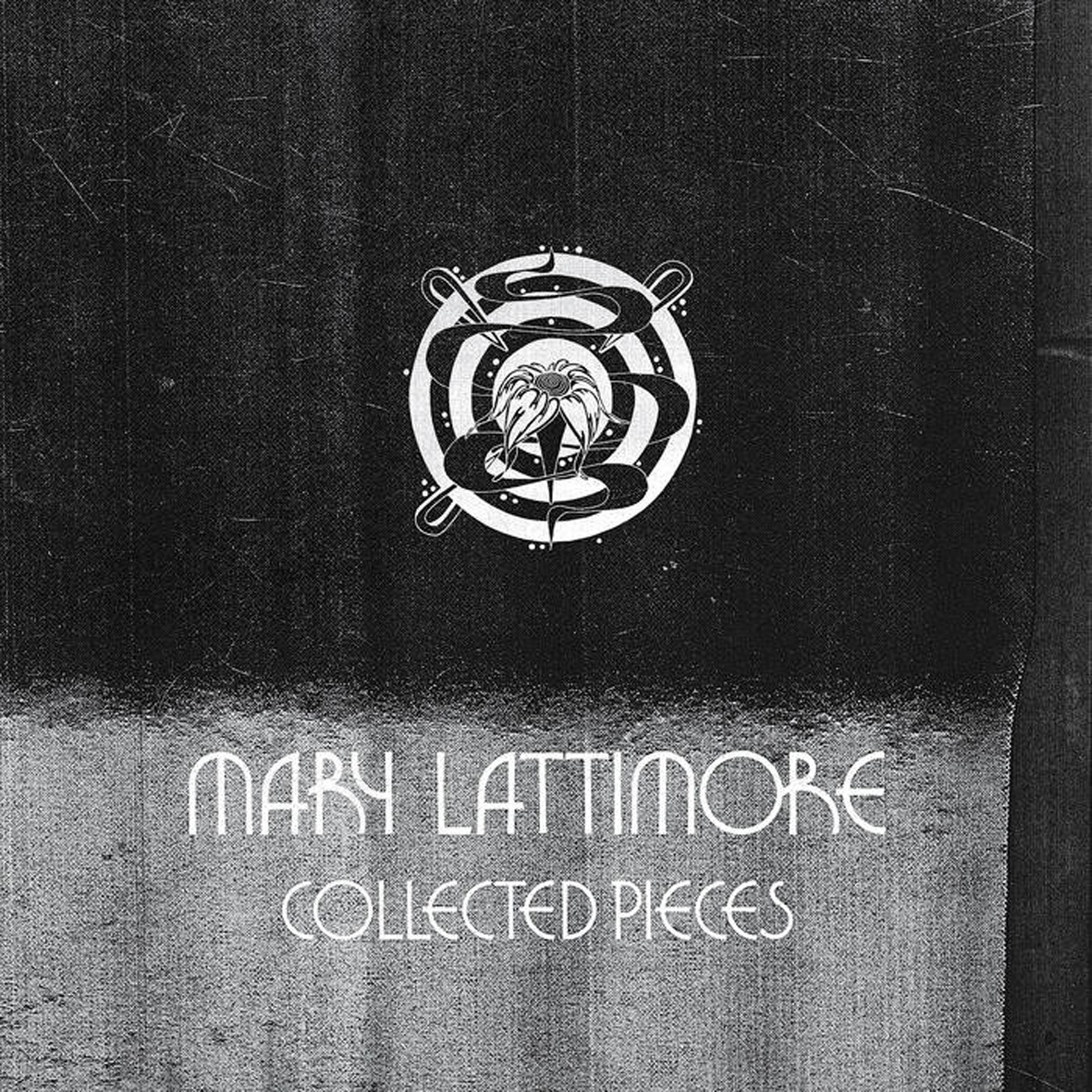 Modestly billed as a counterpart to last year’s At The Dam album, the prosaically titled Collected Pieces is quite a big and very pleasant surprise, as my expectation was that it would just be some outtakes and orphaned pieces of interest to serious fans only (an expectation that was only reinforced by the limited edition cassette format).  I suppose these six pieces are technically orphans of a sort, as they never made it onto any of Lattimore's formal albums, but it certainly was not because they were not good enough.  Rather, they all just surfaced as an erratic trickle of one-off self-released pieces on Bandcamp and Soundcloud.  That method of working definitely seems to suit Lattimore, as this "box of memories"/impressionist travelogue is at least as good as any of her actual albums and the gorgeous "Wawa By The Ocean" and "The Warm Shoulder" easily rank among her finest moments to date.
Modestly billed as a counterpart to last year’s At The Dam album, the prosaically titled Collected Pieces is quite a big and very pleasant surprise, as my expectation was that it would just be some outtakes and orphaned pieces of interest to serious fans only (an expectation that was only reinforced by the limited edition cassette format).  I suppose these six pieces are technically orphans of a sort, as they never made it onto any of Lattimore's formal albums, but it certainly was not because they were not good enough.  Rather, they all just surfaced as an erratic trickle of one-off self-released pieces on Bandcamp and Soundcloud.  That method of working definitely seems to suit Lattimore, as this "box of memories"/impressionist travelogue is at least as good as any of her actual albums and the gorgeous "Wawa By The Ocean" and "The Warm Shoulder" easily rank among her finest moments to date.
There are lot of preconceptions that I have about what a harp album is likely to contain, but one thing that I never expected to encounter was a rippling, lushly beautiful tribute to the beloved hoagie-purveying convenience store Wawa.  Technically, I still have not encountered that, as the opening "Wawa By The Ocean" is more directly inspired by Mary's memories of trips to the beach town of Ship Bottom, NJ, but Wawa still amusingly sent her a prize pack when they found out about the song.  Being a harpist seems very lucrative sometimes.  As for the song itself, "Wawa" is quite a slow-burning and quiet stunner, unfolding a lovely bittersweet melody over a beautiful descending progression of arpeggios.  While the composition itself is quite wonderful, Lattimore's subtly escalating use of effects gradually transforms the piece into an exquisitely layered dreamscape of shimmering afterimages, undulating hazes of overlapping notes, and gently hallucinatory delay.  It is quite an impressive achievement indeed, as the piece does not evolve so much as seamlessly dissolve into heavenly soft-focus unreality.  Naturally, that makes "Wawa" an impossible act to follow, but Mary doubles down with the even longer "Bold Rides."  Initially, that elegiac piece sounds like fairly standard Lattimore fare (which is just fine), but eventually a new vibrato-heavy and zither-like motif blossoms in the upper registers that makes me feel like I just time-traveled back to an imperial Chinese court.  Though it is somewhat less successful than its predecessor due to its lack of a central heart-grabbing melody, "Bold Rides" follows a very similar trajectory, as the various layers gradually start to deliriously bleed together and tumble all over one another.  In fact, "Bold Rides" ultimately takes that processing even further, eventually reversing and transforming one layer into chirping abstraction.
The next piece takes a languorous trip to Twin Peaks, as the brief and hazily rippling "We Just Found Out She Died" pays tribute to The Log Lady (Margaret Lanterman passed away soon after Lattimore saw her speak).  The evocatively titled "It Was Late And We Watched The Hotel Burn" is yet another major piece, eschewing conventional structure for bleary, hallucinatory ambiance, weaving a distorted tapestry of backwards melodies, plinking and overlapping cascades of arpeggios, and an undercurrent of blown-speaker rumble and snarl.  The following "The Warm Shoulder" (inspired by a cannibalism-themed joke, naturally) unexpectedly distills the best aspects of "Wawa" and "Bold Rides" into one concise and perfectly chiseled piece, lazily unfolding a beautiful melody over a delicate tapestry of arpeggios, then gradually embellishing it with more exotic zitherisms and subtly psychotropic layers of haze and delay.  The album then winds to a close with soft-focus reverie "Your Glossy Camry," which initially seems like a pleasant and lazily undulating soundscape of pointillist arpeggios before unexpectedly blossoming into a lovely and tender solo.  While it is not the strongest piece on the album, it makes an absolutely perfect coda as it gradually pares down to an unexpected level of quiet intimacy (it feels like every little pick and scrape is amplified and nakedly audible by the end).
The most withering critique that I can muster of Collected Works is merely that "We Just Found Out She Died" is a bit underwhelming and that a few of the longer pieces could have benefited from more aggressive editing.  Of course, the counterargument for the latter is that the longer pieces all tend to undergo a striking transformation at some point, which is a compositional tactic that often benefits from the length of the journey.  Bringing up perceived flaws is kind of beside the point here anyway, as it is hard to be disappointed that a compilation of unreleased material falls just shy of perfection.  For the most part, Collected Pieces is a genuine revelation.  I admittedly have a tendency towards hyperbole sometimes, but a piece like "Wawa By The Ocean" manages to elicit an almost childlike level of joy and wonder in me, as Lattimore is able to craft something of guileless, simple, and heartfelt beauty, yet still manages to imbue it with enough depth, experimentation, and subtly unreality to overcome my jaded aversion to prettiness.  I could probably also go on all day about Lattimore's knack for affecting melodies and genius for transcending the constraints of the harp's limited palette, but the real magic of her best work lies in the refreshing, clear-eyed purity of her vision: while Lattimore admittedly employs a healthy arsenal of studio effects, that artifice generally tends to be in service of a strong, focused melodic hook presented with elegantly uncluttered accompaniment and she hits the mark with uncanny regularity here.  I think this might actually be my favorite Mary Lattimore album.
 
Read More
- Administrator
- Albums and Singles
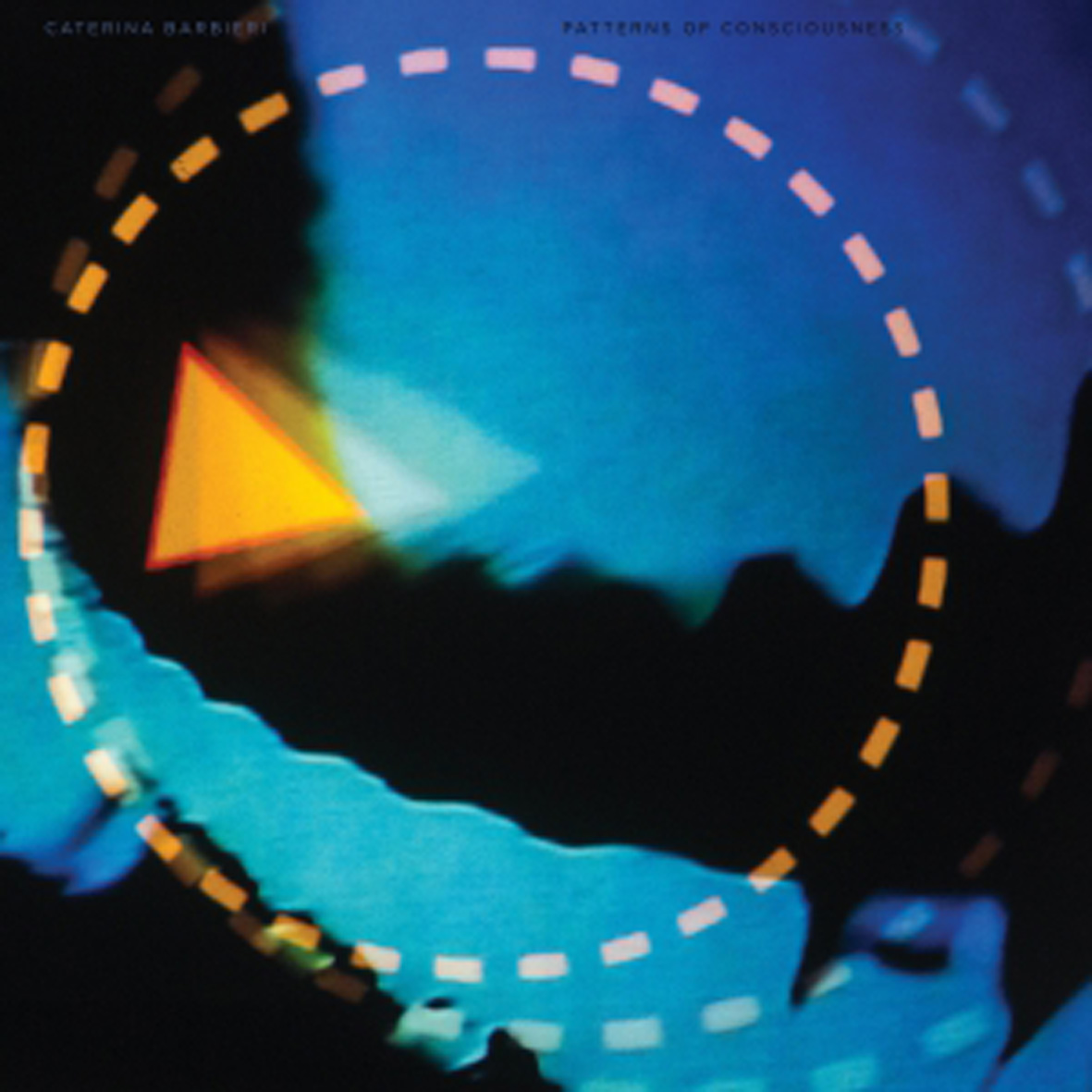 Following a handful of elusive limited edition cassettes, Berlin-based composer Caterina Barbieri makes her formal debut in a big way with this massive and mesmerizing double LP epic.  On one level, Patterns of Consciousness is quite possibly the epitome of Important Records' long-standing obsession with pure synthesizer albums.  On deeper level, however, this album is a unique and ambitious experiment that also happens to be synth-based, as it is structurally inspired by Barbieri's interest in baroque lute music and conceptually inspired by a desire to trigger a fracture in consciousness through subtle shifts in hypnotically repeated patterns.  Either way, it is quite an achievement.
Following a handful of elusive limited edition cassettes, Berlin-based composer Caterina Barbieri makes her formal debut in a big way with this massive and mesmerizing double LP epic.  On one level, Patterns of Consciousness is quite possibly the epitome of Important Records' long-standing obsession with pure synthesizer albums.  On deeper level, however, this album is a unique and ambitious experiment that also happens to be synth-based, as it is structurally inspired by Barbieri's interest in baroque lute music and conceptually inspired by a desire to trigger a fracture in consciousness through subtle shifts in hypnotically repeated patterns.  Either way, it is quite an achievement.
This is actually Barbieri's second full-length for Important (or for any label, for that matter), as she first surfaced in 2014 with Vertical on the label's Cassauna imprint.  Predictably, that album was similarly synth-centric (it was composed for a Buchla 200), but otherwise bears little resemblance to this latest salvo.  All of the vocals, techno touches, drone elements, and grinding textures from that release earlier are gone and forgotten, which makes sense, as it seems like Barbieri was still finding her direction at that point.  I think she has conclusively found it now, as Patterns seems much more like an inventive, coherent, and honest fusion of her far-reaching and esoteric aesthetic and conceptual interests.  In fact, it would be an understatement to say that Barbieri has an interesting background for a modern synth composer, as she has studied classical guitar in Italy, extensively researched the history of Hindustani music, and written a thesis on "3D spatialization and the perception of time, space and sound spectrum in vertical music."  In the wrong hands, such a resume would undoubtedly translate into something rather bloodless and over-cerebral, but Barbieri proves to be quite adept at using her deep knowledge to take relatively accessible and vaguely Kosmiche music into more transcendent and psychotropic realms than usual.  The closest stylistic antecedent for Patterns of Consciousness is prime/early Tangerine Dream, though Barbieri has clearly assimilated that influence in a rather curious and oblique way.
The area where Barbieri's unique sensibility manifests itself most conspicuously is that of structure and sequencing.  For example, each piece is composed of just a few simple intertwined patterns and nothing more, unrelentingly pulsing and burbling along from anywhere from 5 to 15 minutes with no significant new motifs or melodic shifts ever turning up to disrupt the entrancing spell.  Also, on a larger scale, the album itself is structured rather bizarrely: each piece that has an actual name, such as the opening "This Causes Consciousness to Fracture," is followed by a much slower piece with the same title presented as an acronym ("TCCTF," for example).  The two pieces seem paired in name only, unless any shared patterns are slowed to complete unrecognizability, yet they certainly seem designed to give the album a very unusual rhythm (the more complex and kinetic pieces are always followed by languorous and comparatively simple ones).  That disorienting dynamic push/pull pattern is not broken until the final piece, the slow-moving coda of "Gravity That Binds."  Despite their significant differences, however,these seven pieces are thematically held together by a thread of strong, uncluttered melodies and enormous attention to small-scale dynamics.  Given the understated nature of the album, Barbieri keeps the effects subtle, but her constant tweaks are more than enough to keep her themes sounding fresh: nothing is ever static and all of the various threads are constantly shifting in relation to one another and leaving a vapor trail of bleary after-images.
If Patterns of Consciousness has a fault, it is only that its mantric repetition, deceptive simplicity, and minimalist aesthetic do an unintentionally fine job of concealing Barbieri's more radical intentions.  Also, I am not sure that her foundational premise was actually successful in "unfolding new layers of perception" or unlocking unused psychic potential in me, though I doubt such changes would register all that dramatically in the conscious mind if they occur.  The subject certainly interests me, but I have historically had much more of a noticeable psychoactive response to experiments with inaudible frequencies than I did with these shifting patterns.  Still, it was a valiant effort that yielded an unusual album, so there is little to grumble about.  More importantly, no one at all would care about the conceptual ambitions of this album if the actual music was not good (which it is), so any triggered hallucinations, revelations, or breakthroughs into a higher mental plane are just icing on the cake.  In particular, I was most struck by some of the slower, later pieces on the album, such as "INTCAEB" and "SOTRS," which resemble a sort of narcotic, sensuous, and bittersweetly melancholy twist on an organ mass.  More significantly, Patterns of Consciousness as a whole feels like a major artistic statement through sheer obsessive repetition, slow-burning accumulation of power, and Barbieri's singularly lute-influenced and arpeggio-heavy approach to modern synth composition.  It is extremely damn hard to establish a distinctive voice wielding only a synthesizer, but Barbieri has succeeded admirably at it.  No one else sounds like this.
 
Read More
- Administrator
- Albums and Singles

Mike Cooper's output of the past half century has been described as "post-everything." It's a fitting phrase really when you consider he has been at the beating heart of so many critical musical moments. From the development of the blues touring circuit in the UK, through the growth of the folk scene and into the explosion of free improvisation that came to define a generation of UK musicians. Amidst it all, working at stitching these disparate forms into some kind of deterritorialised zone, was Mike Cooper.
It’s fitting then, that he explores the notion of journey on his latest full length edition. Even more fitting that he examines the vessels that carry us on journeys. With Raft, Cooper charts his interests in ambient exotica and collides it with his research into various South Pacific musical traditions. The record extends his palette considerably, stretching away from the hypnogogic flows of his master piece Rayon Hula, into a more oceanic setting. "Raft 21 Guayaquil To Tully," for example, sets out a lilting rise and fall of harmony which erupts with spluttering electronics.
Specifically inspired by Vital Alsar and William Wills, sailors who undertook some of the 20th centuries most impressive solo voyages, Raft reflects upon the determination of the solo traveller. In a musical sense, Mike Cooper's work of recent years has very much reflected a determined solo traveller work ethic. In his commitment to travel alone, he has developed a range of strategies that he works against as a means of surprising himself and uncovering unfamiliar sonic relations.
This approach has proved an incredibly fertile pursuit for Cooper, arguably producing some of his most affecting and engaging works, his Room40 albums Fratello Mare and White Shadows Of The South Seas amongst them. Raft is a vital record that sets its sights beyond the horizons of convention and in doing so reveals a perspective that is only available to lifelong voyagers such as Mike Cooper.
Out July 7, 2017 on Room40.
Read More
- Administrator
- Albums and Singles
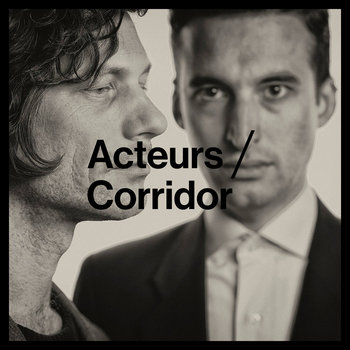
"Like The Pet Shop Boys jamming with Whitehouse"
After a three year silence, mysterious Chicago duo Acteurs return with not only new music, but the debut of new label MILD VILNC. Their signature bleak - downtown punk sound remains intact, welded together by stark noise and a tense momentum. It's minimal all around but not lacking for substance, each track pushing the boundary between simplicity and unknown force.
The 5 tracks collected on the Corridor EP show Acteurs turning their already strong aesthetic on its head, opening it up from the other side. Mini mantras butt up against scrapes and drones, tied together with rhythms built and taken apart again. It's the sound of a future you may not want to be a part of, but we don't really have a say in that do we?
More information can be found here.
Read More
- Administrator
- Albums and Singles

In late 2014, Planning For Burial's Thom Wasluck left the red house in New Jersey he’d called home for the last decade to return to his childhood bedroom in the mountains of Pennsylvania. Back in the house where he grew up, Wasluck found himself cut off from the familiarities of the previous decade as he put himself to work in the family trade. The monotony of routine quickly set in; work, home, and alcohol day after day became the norm. The childhood room that had given birth to his primordial four-track recordings was now a place of emptiness. These conditions set the stage for Planning For Burial’s third full-length, Below the House.
In terms of genre, Planning For Burial is often simply characterized as "gloom," which can be seen as a blend of slowcore, shoegaze, doom, 90s alt rock and drone, and this album offers nine sullen and frequently heavy songs that brim with nostalgia and suburban ennui. It is a return to form of sorts to his beloved first album, 2010’s Leaving — an introverted work characterized by its heavy dynamics and personal obsessions.
Since the beginning, Planning For Burial has been a solo endeavor. Wasluck has been recording music himself and touring extensively as a one-man band, playing hundreds of shows in DIY spaces and nightclubs, where he has shared the stage with acts like Deafheaven, King Woman and Chelsea Wolfe. Both incredibly loud and intimate, Planning For Burial plays with an unrivaled passion and funereal grace that is equally at home in basements and large venues.
Out now on The Flenser.
Read More
- Administrator
- Albums and Singles

The union of two creative forces with notable experience in the esoteric, Teleplamiste have emerged with a debut album of magical intensity and ecstatic fortitude. Frequency is the New Ecstasy conjures an audial liminal zone in which ancient methods and futuristic visions collide and collude.
This duo is formed by Mark O. Pilkington, whose work has extended from publishing countercultural and arcane literature with Strange Attractor Press to summoning rural drone reveries with Urthona, and Michael J. York, who brought his wide knowledge of traditional wind instruments to bear in bands that include Coil, Cyclobe, Guapo and The Stargazer's Assistant. The duo blur vintage synthesis and contemporary electronics with acoustic pipes to create a transcendent reverie that exists on a wavelength beyond both retro fetishism and modern-day machinations.
These six long, meditative pieces map out and extend into the infinite a pathway from the eerie realm of mid-twentieth century radiophonics, and the work of minimal iconoclasts like Daphne Oram and Else Marie Pade, through the kosmische music of the '70s such as Cluster and Tangerine Dream to contemporary modular synthesists such as Keith Fullerton Whitman and Lichens, following a vision imbued with power and singularity. Heavy ambience and otherworldly atmospherics marry here amidst an aura of epiphanic radiance.
Rich, transporting and thoroughly immersive, Frequency is the New Ecstasy is a thing of trance states both euphoric and unheimlich.
Out now on House of Mythology.
Read More
- Administrator
- Albums and Singles

A distillation of cultural memory through electronic process, James Place —the creative guise of New York native Phil Tortoroli, returns with his third release for Umor Rex. The sonic realization of love and loss, re-sculpted for the Post-Modern age, pursuing his glacial take on techno into newly intimate depths.
Departing from a line in TS Elliot’s Four Quartets "the moment in and out of time," its works take form through the haze of a dream. Over the course of several months Tortoroli tracked heaps of live stereo jams at home, jamming on his drum machine, sampler, polysynth, and effects setup. Poring over these hours of hazy jams, Tortoroli heard himself straining for an additional voice to further emote. Rifling through a vast library of old bounces and experiments, Tortoroli rediscovered the music of Sam Sally to complete Voices Bloom, resampled live and again "subdued into explorations of an old practice."
Voices Bloom is the musicality of cultural collage, immensely personal and intimate, arms stretched out, gathering diverse sonic worlds. The artist and his craft as a self-reflexive lens for an electronic age —a sonic patchwork heard from afar— impressions of memory, drawn close to the heart. Within the album’s cool displaced tones, rise nostalgic romances, drifting rhythmic works which defy the beat. A world where time enters multiple frames, those possible, literal, implied, forgotten, and remembered anew. The final results on Voices Bloom are the most reflective yet from James Place. The hopeful kosmische beats and hauntological synth music on previous albums, and more delicate melodies, riding crisp minimal rhythms that flow elegantly from vignette to vignette. Rhythms of abstract techno with glistening melodic lights.
Out May 19, 2017 on Umor Rex.
Read More


